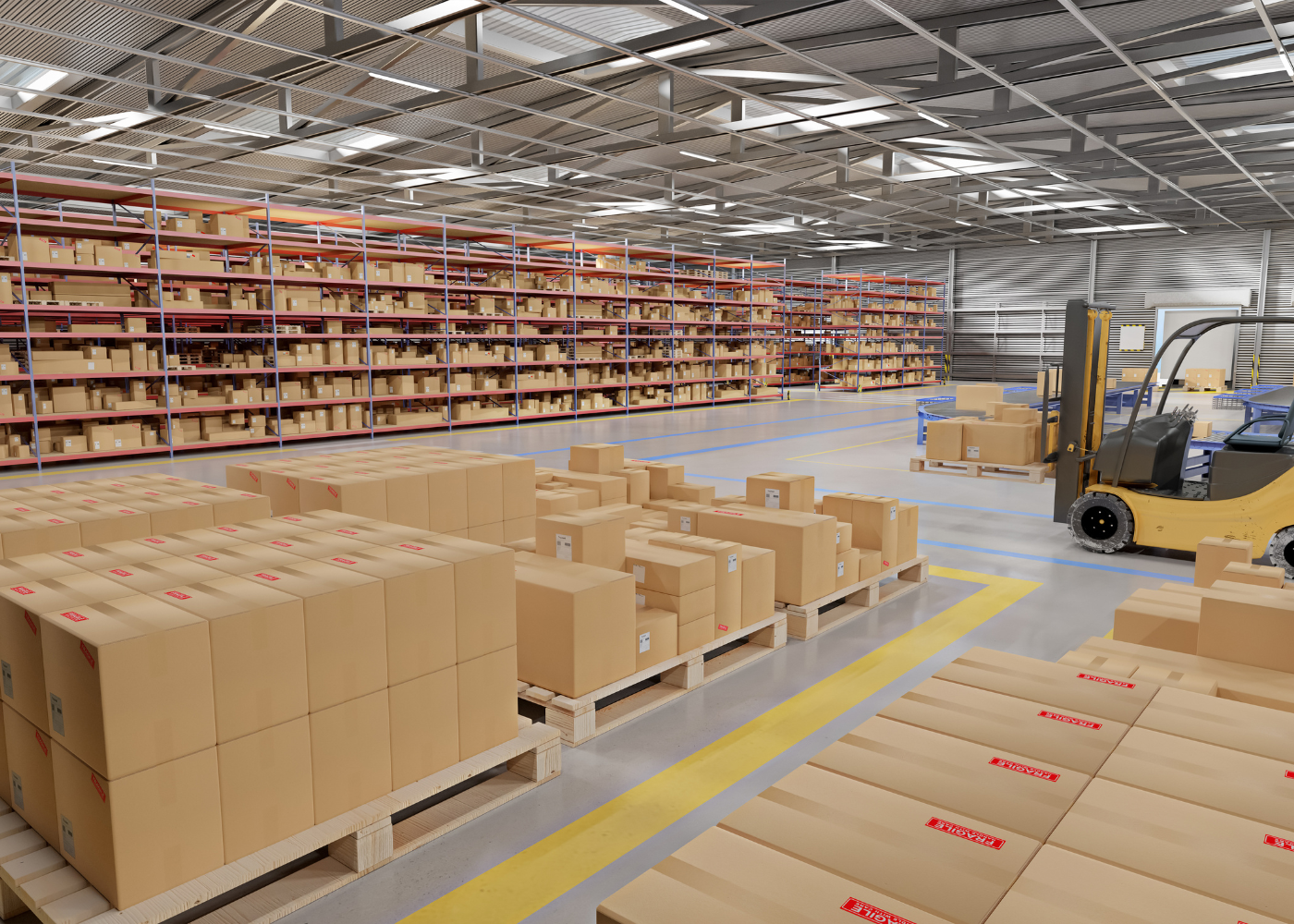En moyenne, les coûts de détention des stocks sont à hauteur de 25 % de la valeur de la marchandise. La gestion des approvisionnements représente un enjeu majeur de rentabilité dans une entreprise. Pour minimiser le stockage et les frais qu’il génère, certaines sociétés ont recours à une méthode qui nous vient du Japon. Il s’agit du flux tendu en logistique. Si ce concept est très bénéfique pour la supply chain, ses contraintes peuvent mettre en danger la chaîne d’approvisionnement d’une structure. Voyons comment contourner ces obstacles et faire du flux tendu un tremplin pour son activité.
Flux tendu ou le « juste-à-temps » : qu’est-ce que c’est ?
Également connu sous les noms de « juste-à-temps » (JAT) ou « zéro-délai », le flux tendu est une méthode de gestion des flux logistiques issue de l’industrie automobile japonaise. Elle consiste à approvisionner la matière première ou la marchandise à l’instant précis où la chaîne logistique en a besoin.
Que ce soit en production ou en logistique, l’objectif du flux tendu est de minimiser les coûts liés au stockage. Ce type d’organisation vise aussi à réduire les délais de fabrication et de livraison.
Le JAT est particulièrement adapté aux secteurs de production qui requiert un très grand nombre de composants, tels que l’aéronautique. Cela permet de stocker à moindre coût. La stratégie est aussi gagnante pour les activités où les fluctuations de la demande sont stables et prévisibles.
Exemple : Dans la grande distribution, les entrepôts régulant une chaîne d’hypermarché organisent minutieusement les arrivages de marchandises. Ils doivent, en quelques heures, les grouper et les expédier aux supermarchés. Une coordination avec l’ensemble des fournisseurs et transporteurs est primordiale. Elle garantit qu’aucune marchandise ne manque à aucune commande et que les envois sont effectués en temps et en heure.
L’intérêt du flux tendu en logistique : avantages et contraintes pour sa supply chain
Vous l’aurez compris, le principal atout du flux tendu est d’augmenter la rentabilité de l’entreprise. Cette méthode de gestion optimise les approvisionnements et la production, réduit les stocks, ne mobilise pas de capital pour l’entreposage de marchandises inutiles. Elle limite les frais liés au surstockage et au gaspillage.
Lorsqu’il est utilisé en production, le flux tendu participe à l’accélération du processus de fabrication. Celui-ci gagne en efficacité grâce aux prévisions de vente qui permettent un approvisionnement optimisé.
Malgré tous ces avantages, la méthode JTA peut être dangereuse si elle n’est pas bien maîtrisée. Le flux tenu implique diverses contraintes. À la moindre faille dans l’organisation, l’entreprise peut subir les conséquences d’une rupture de stocks, d’un blocage en production ou de retards de livraison. Il est donc important de bien ficeler cette stratégie.
À lire aussi : pourquoi et comment externaliser sa logistique ?
La mise en œuvre du flux tendu dans sa logistique : 4 points clé pour optimiser ses performances
En supply chain, la réussite d’une stratégie repose sur l’étude de chaque composante de la chaîne logistique. Instaurer le flux tendu dans ce type de processus demande une grande rigueur et une synchronisation entre tous les acteurs. Cela repose sur 4 piliers principaux.
1. La prévision des ventes
En flux tendu, l’approvisionnement dépend des tableaux prévisionnels de demandes. Plus cette planification est précise, mieux l’entreprise répondra à la demande, tout en optimisant ses flux physiques. Cela permet d’éviter d’avoir trop de stock ou une rupture dans le cas d’une augmentation imprévue des commandes.
2. La synchronisation de l’information entre tous les acteurs de la chaîne logistique
Il s’agit du partage des données avec ses fournisseurs, transporteurs, sous-traitants et clients en BtoB. Les outils informatiques utilisés par ces acteurs doivent être interconnectés. Cela permet de mettre à jour les informations en temps réel et de les synchroniser pour tous. Le but est de pouvoir réagir rapidement pour répondre à la demande.
3. Une transparence sur la stratégie de livraison
Tous les maillons de la chaîne logistique doivent être au courant des délais de livraison et des conditions d’envoi des produits. Chaque acteur peut ainsi anticiper les actions à mener pour remplir son rôle dans les temps impartis et éviter de retarder le processus.
4. La coordination en interne
Une bonne coordination entre fournisseurs, transporteurs et clients est essentielle, mais pas suffisante. Au sein de l’entreprise, tous les services (Direction, achats, marketing, comptabilité, etc.) doivent coordonner leurs actions. Une bonne communication interne garantit le bon fonctionnement d’une logistique en flux tendus. En effet, chaque acteur de l’organisation y a son rôle à jouer.
5. L’optimisation de la gestion logistique
Pour bien mener la mise en œuvre du flux tendu, il est essentiel d’investir dans un logiciel type ERP (Entreprise resource planning) ou WMS (Warehouse Management System). Ces outils sont indispensables pour avoir une vision globale de la sypply chain. Elle permet aussi d’analyser de multiples données en peu de temps, d’automatiser certaines taches et d’accélérer le traitement des différents types de flux logistiques, à savoir physiques, informatiques et financiers.
Découvrez aussi : pourquoi choisir un prestataire 4 PL ?
Le flux tendu en logistique : ce qu’il faut retenir
La stratégie du flux tendu en logistique garantit la continuité de l’approvisionnement tout en minimisant les stocks. Elle réduit les coûts opérationnels et limite le gaspillage. En contrepartie, elle génère beaucoup de contraintes et fait prendre des risques à l’entreprise.
Pour profiter des bienfaits de la logistique en flux tendu, il faut mettre en place des actions concrètes. La digitalisation logistique, la bonne coordination entre les acteurs internes et externes, le partage des données et la prévision des ventes sont fondamentaux pour optimiser les performances du « juste-à-temps ».
Votre entreprise est en pleine croissance ? Votre processus logistique doit suivre la cadence des commandes ! Nos experts vous accompagnent pour mettre en œuvre une logistique en flux tendu. D&figroupe vous permet aussi d’externaliser votre supply chain pour mieux la maîtriser. Pour concevoir votre projet sur mesure, contactez dès maintenant votre interlocuteur dédié chez D&figroupe.
Sources :





Merci pour ces détails important sur ce système de flux tendu en logistique qui donne des nombreuses possibilités.